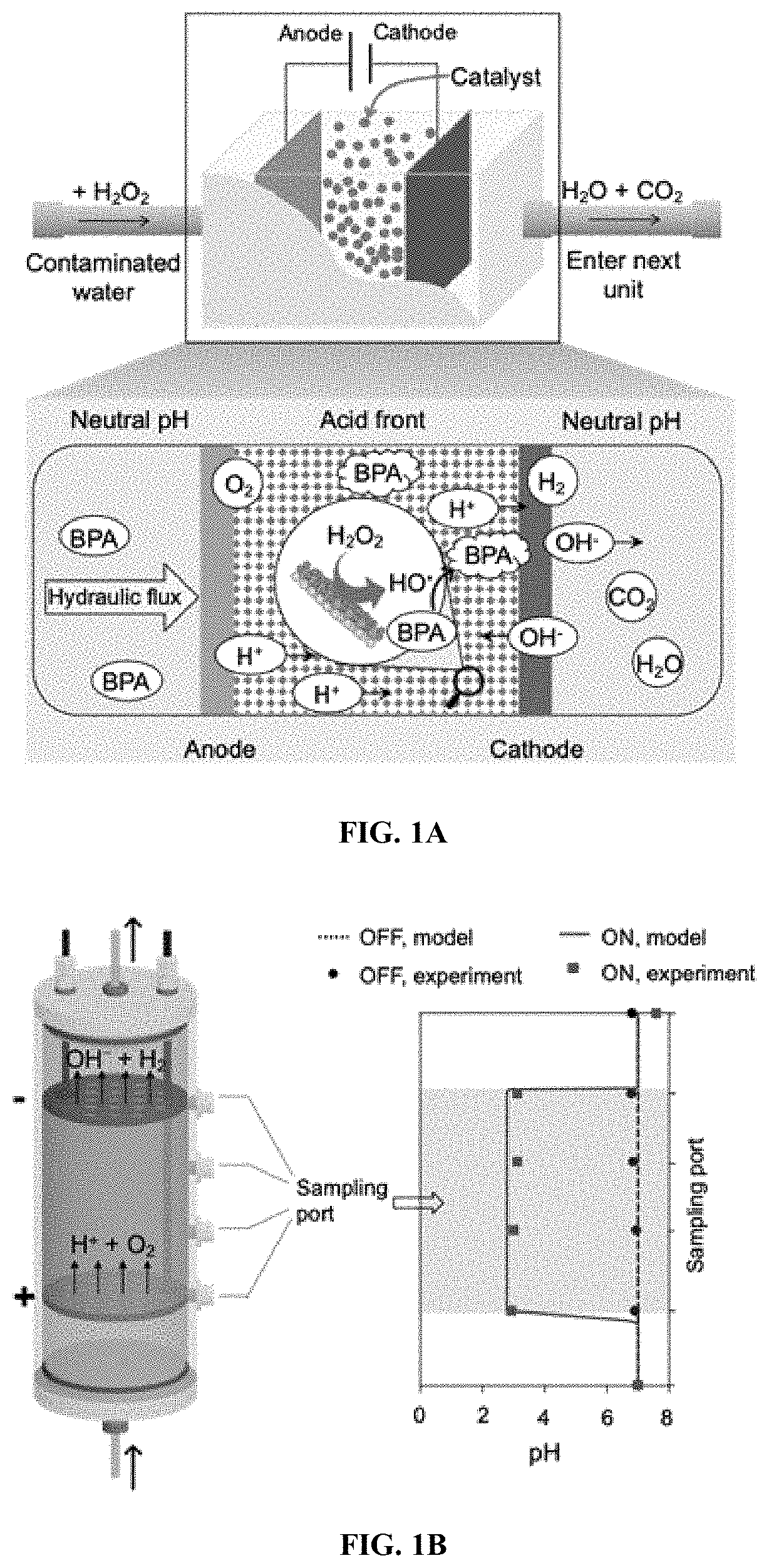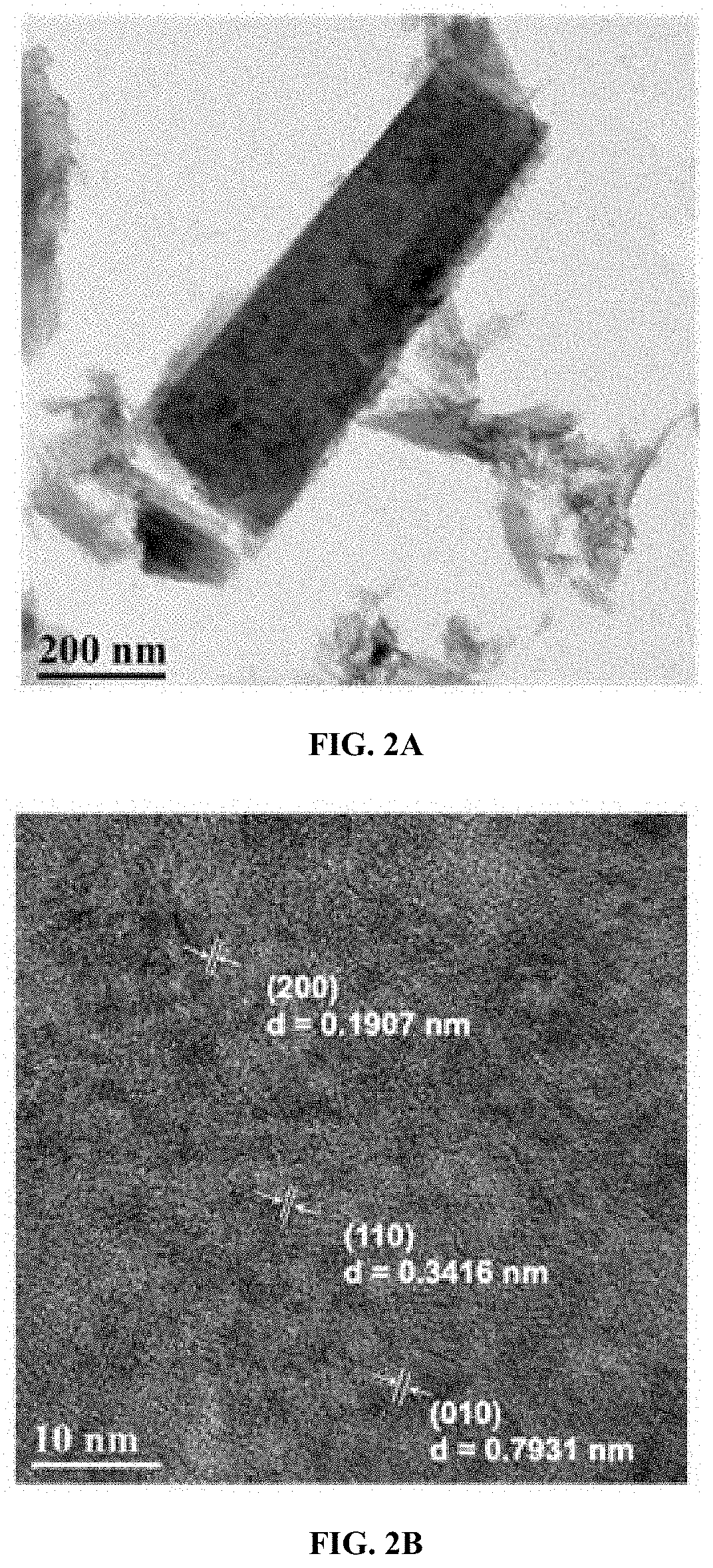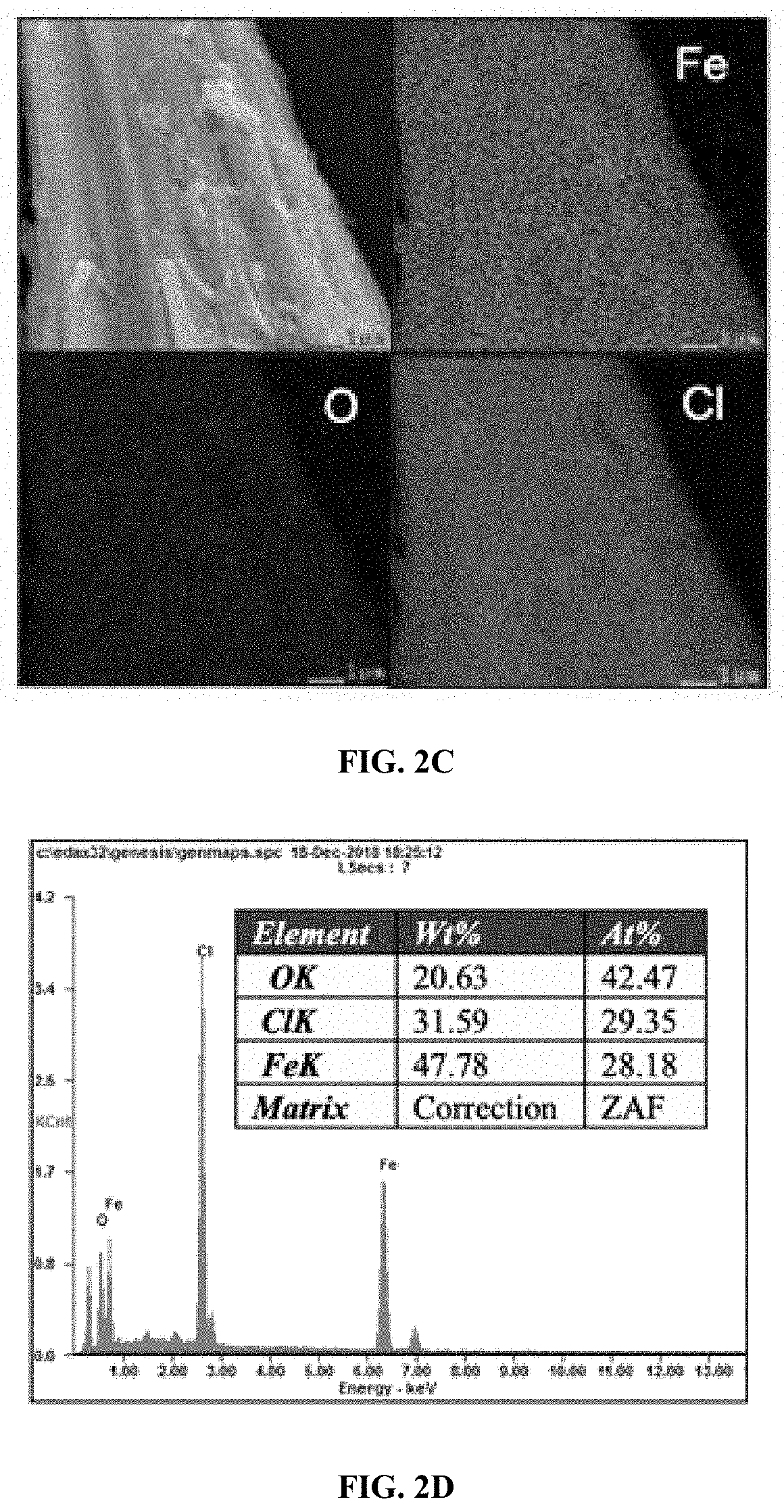Robust flow-through platform for organic contaminants removal
a flow-through platform and organic technology, applied in the direction of water/sewage treatment by oxidation, metal/metal-oxide/metal-hydroxide catalyst, physical/chemical process catalyst, etc., can solve the problems of limiting the implementation of the fenton process, many advanced water treatment facilities are flawed by high capital costs, and the formation of ferric sludge remains a challeng
- Summary
- Abstract
- Description
- Claims
- Application Information
AI Technical Summary
Benefits of technology
Problems solved by technology
Method used
Image
Examples
example 1
a Flow-Through Water Treatment Platform
[0136]Ella process was utilized to regulate pH of heterogeneous Fenton-like catalysts for water treatment with desired acidity. To this end, immobilized catalysts must be transferred to the acidic zone mediated by the Ella process, whereby H2O2 is rapidly transformed into oxidizing HO. radicals, leading to the instant degradation of organic compounds in the local vicinity (FIG. 1A). This coupled water treatment process is categorized as electro-Fenton-like (EFL) platform in this study. The flow-through treatment method is especially favored over batch reaction mode for industry application, since a water treatment plant treats high volume of contaminated water in a fast pace. Besides, it is worth of noting that the EFL platform can take advantage of the intermittent solar and wind electricity, often with near-zero or even negative prices.
[0137]The contaminants treatment efficiency by the EFL platform is majorly determined by the reaction during...
example 2
ormance of the Electro-Fenton-Like Platform
[0144]The synthetic FeOCl / Al2O3 composites were transferred to the space between electrodes of the column, in order to utilize the acidity produced by the Ella process (FIG. 17A). Neutral solutions containing 10 mM H2O2 oxidant and 10 μM BPA contaminant were pumped through the column at a rate of 15 mL / min, and BPA removals along the hydraulic flux direction were measured (FIG. 17B). Low BPA removal from the effluent (17.6%) was observed without electric current, due to the weak activity of FeOCl / Al2O3 under neutral condition. However, after a 100 mA electric current was applied to electrodes, gradual degradation of BPA took place as measured from the sampling ports, and BPA removal reached 100% in the effluent. Direct BPA degradation by electrodes was ruled out based on control experiment (FIG. 18). Additionally, the presence of 10 mM ethanol as HO. radical scavenger almost fully quenched BPA removal (FIG. 18), suggesting that in situ prod...
example 3
Field Water Samples
[0149]The results demonstrate the effectiveness of the EFL platform in synthetic solutions of complex water chemistry. Furthermore, in this study, water samples extracted in the field from surface or groundwater sources were used as the matrices for BPA removal with intrinsic conductivity supporting electrochemical water splitting. Water quality characteristics are shown in Table 2. Treated water bodies were acidified to pH 2.9-4.04 by the Ella process, and 91.7 to 97.2% BPA removals were achieved by the mediated Fenton-like process (FIG. 21).
PUM
| Property | Measurement | Unit |
|---|---|---|
| electric current | aaaaa | aaaaa |
| flow rate | aaaaa | aaaaa |
| dry weight | aaaaa | aaaaa |
Abstract
Description
Claims
Application Information
 Login to View More
Login to View More - R&D
- Intellectual Property
- Life Sciences
- Materials
- Tech Scout
- Unparalleled Data Quality
- Higher Quality Content
- 60% Fewer Hallucinations
Browse by: Latest US Patents, China's latest patents, Technical Efficacy Thesaurus, Application Domain, Technology Topic, Popular Technical Reports.
© 2025 PatSnap. All rights reserved.Legal|Privacy policy|Modern Slavery Act Transparency Statement|Sitemap|About US| Contact US: help@patsnap.com



